The Ten Commandments: be aware of those who feign law, morality & ethics
Beware the hand who dares to inscribe ‘the writing on the wall’ Daniel 4-5 (or for that matter, any writing, on any wall or any stone ‘tablet’ — and for the record, not the Stone Chumash, and not the Apple Tablet)

With the soon approach of Shavu’ot — or the ‘Giving of the Torah’ — it is now time to try to understand the ‘use’ of this ‘law’
—
or ‘who gets to use it and for what purpose’
There are a number of State politicians who want to put the Ten Commandments on Court House walls (if not other places as well) . . . ‘politicians *’

_______________
Judaism of the 1st Century moved to have the Ten Commandments removed from all of our Prayer Quoroms, our Tefillot, and our Prayer Services, — albeit with an exception, here and there. Let’s have a look at the context . . .
Excerpted from an essay from Dr. Professor Greenstein Bar Ilan University:
The Decalogue in Liturgy
In the late Second Temple period, the Ten Commandments, or Decalogue, was as central to Jewish worship as the Shema (Deut 6:4-9) and preceded it in the morning prayers of the priests, prior to their making the daily (Tamid) sacrifice in the Temple (Talmud foundation of Mishnah Tamid 5:1). We find the canonical sequence of Decalogue-Shema in the Book of Deuteronomy (chapters 5-6), and in an ancient page of papyrus from around 150 B.C.E. Experts agree that this papyrus records a part of the daily Jewish liturgy. The Decalogue was, then, an integral part of Jewish worship.
What happened? — the removal of the Ten Commandments from our Prayer Services . . . .
Already in the early Talmudic period, however, the practice of reciting the Decalogue prior to the Shema was discontinued. The Talmud (i.e. The Babylonian Talmud > b. Tractate: Berakhot 12a) provides an explanation. Many Jewish Christians and certainly gentile Christians—minim or “sectarians” in rabbinic terms—maintained that the full gamut of mitzvot, and especially the ritual ones, need no longer be observed. The essence of the mitzvot, they held, can be boiled down to a number of mostly ethical injunctions found in the Decalogue.
Today, the only way we mark the significance of the Decalogue (today, meaning ‘in these times’) ritually — is that we stand when we read it from the Torah in the synagogue (in Parashat Yitro, Parashat Va’etḥanan, and on the festival of Shavu‘ot).
* Here, an article from 2003 re Ten Commandments proposed to be used as a Judicial symbol: https://www.nytimes.com/2003/07/02/opinion/the-ten-commandments-judge.html?searchResultPosition=2
Below, an excerpt from this ^ op-ed opinion:
“Installing religious iconography in a state courthouse is, as the United States Court of Appeals for the 11th Circuit explained, a clear violation of the First Amendment’s Establishment Clause. The court, based in Atlanta, rightly rejected Chief Justice Moore’s claim that his Ten Commandments monument is just a secular reminder of the Judeo-Christian foundations of American law. The First Amendment does not permit the government to favor Judeo-Christian religion over other religions, or over no religion at all.”
